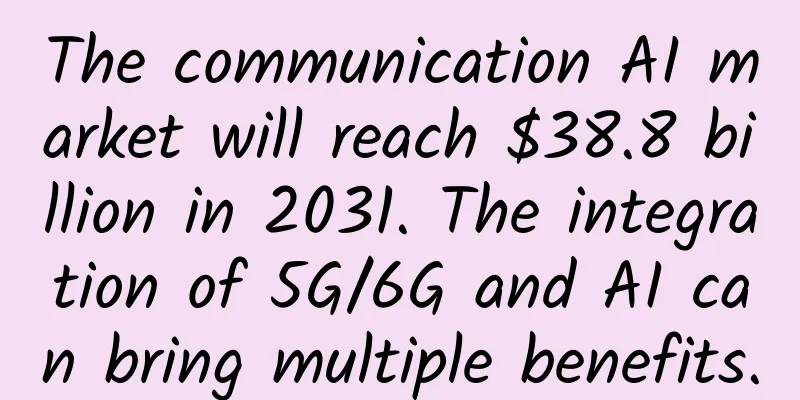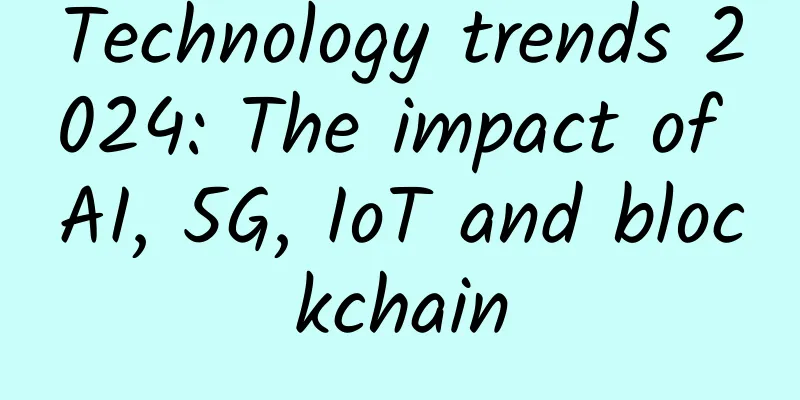Is the 5G era really here? Let’s solve the dilemma of 5G spending too much and earning too little first

|
On June 14, the 5G independent networking standard approved by the 3GPP plenary meeting (TSG#80) was considered to be a milestone in the history of 5G development. With the first complete end-to-end standard, the industry's promotion of 5G commercialization will begin to accelerate. The freezing of the first 5G standard has made the industry excited, but from the beginning, there have been doubts about 5G, mainly focusing on the high cost and demand scenarios of 5G. In fact, it is simply a dilemma of "spending too much money" and "making too little money". Judging from the current progress, standardization is indeed only the first step in a long journey, and it will take a long time for 5G to be commercialized on a large scale.
Global standards are guaranteed, but demand will not be in lockstep The freezing of 5G standards condenses the wisdom of the world's best experts in information and communication standardization. Through the organization and coordination of 3GPP, a global unified standard was quickly formed. Looking back on the history of 5G standards in the past few years, 3GPP has adjusted the 5G standard schedule several times to meet the interests of all parties. The most typical one is the 5G acceleration proposal passed in March 2017, which determined that the 5G non-standalone networking (NSA) would be completed six months ahead of schedule, and the standalone networking standard would be completed in June 2018, which was supported by most of the heavyweight companies in the industry. Of course, this is also the result of many interest games, such as the US operators setting up their own doors to "jump the gun" for 5G, and the Japanese and Korean operators hoping to launch 5G at the Winter Olympics and the Olympic Games to achieve a global unified 5G standard. The development of mobile communications requires innovation and demand as dual drivers. Many experts point out that 5G does not have any breakthrough technological innovation. Of course, according to the definition of innovation master Schumpeter, the re-combination of existing resources is also an important feature of innovation. Even if 5G is a re-optimization of existing technologies, it has achieved the advancement of existing technological innovations to engineering and commercialization, and has also achieved major innovations in the information and communication industry. However, although the unified 5G standard has organizations such as 3GPP that are good at playing with the "golden mean" to coordinate the interests of major companies and ensure global unified standards, the demand for 5G is indeed facing fragmented demands from all walks of life, and there is no similar organization to coordinate and unify the demands. The biggest change of 5G is that it allows communication technology to be deeply integrated with more industries and even play a role in the core production and operation processes of many industries in the national economy, such as enabling the transformation of automobile driving, optimizing industrial production processes, and accelerating the transformation from product sales to service models. These deep integration and changes with the industry are impossible to achieve with previous technologies that mainly focus on human-to-human communication. Therefore, the development of 5G also requires the clarity and scale of these industry transformation needs, otherwise the economic feasibility cannot be guaranteed. In April this year, Ren Zhengfei, the founder of Huawei, expressed the following view on 5G in an interview with a reporter:
Technical standards can achieve coordination and interconnection by coordinating companies and organizations with a say in the global information and communication field, but the demand still needs to be gradually explored and the market educated. There may be so-called "explosive" and "killer" demands, but due to the wide impact of 5G on the entire economy, a few "explosive" and "killer" products are not enough to achieve full prosperity of 5G. Spending money: Costs remain high, and large-scale commercial use means large-scale investment The high cost of 5G has long been criticized, especially by operators who need to invest heavily. During the 2017 MWC in Barcelona, the CTO of Deutsche Telekom, the CTO of Telefonica and other senior executives of operators publicly expressed their concerns about the high investment in 5G, and even put forward the slogan "Don't talk about 5G unless the cost is reduced." 1. High network investment costs 5G is deployed in higher frequency bands. To achieve the expected effect, the number of 5G base stations is expected to increase exponentially, requiring the purchase of more equipment, and the price of 5G base stations is expected to be much higher than 4G. With the expectation of increasing the number of base stations and the average price, the investment cost of operators is a prominent contradiction that needs to be resolved. It is estimated that the three major operators have invested more than 800 billion yuan in 4G network construction, and for 5G to achieve large-scale commercial use, the investment in network construction will exceed one trillion yuan. After the network is built, the operating expenses are another astronomical investment. According to a communications industry expert, China Unicom's annual electricity bill for base station facilities alone reaches tens of billions of yuan, not to mention the growing labor costs after the arrival of 5G and the high marketing costs in the face of the fragmentation of the Internet of Things. Such high investment costs need to be absorbed by operators. When there is no new income, on the one hand, there is a requirement for value-added as a state-owned asset, and on the other hand, there is a performance requirement as a listed company. The pressure can be imagined.
From public information, we can see that domestic and foreign operators are actively conducting 5G trials and preparing for trial commercialization. In particular, the three major domestic operators are more motivated with policy support and have released pilot progress intensively. In addition, governments in the Yangtze River Delta and Pearl River Delta are also issuing plans and planning to invest heavily in supporting the development of 5G infrastructure. However, pilot and trial commercialization are small investments after all. Being the first to trial commercialization or even the first to officially commercialize is only a symbolic significance. No operator has yet issued a substantial large-scale commercialization plan. 2. 2G/3G/4G/5G coexist, increasing the difficulty of the industrial chain Currently, many mainstream operators around the world have shut down their 2G network services, and a few operators have also begun to gradually stop 3G network services, re-cultivating spectrum resources for 4G and future 5G, and reducing industry chain costs. However, shutting down 2G/3G networks is not a one-day job, and 5G will begin to debut next year amid a wave of fanatical hype, when 2G/3G/4G/5G multi-generation mobile communication networks will coexist. Although 2G network withdrawal has been put on the agenda of operators, and operators are also firmly implementing frequency reduction work, due to historical reasons and the small number of VoLTE users, 2G networks, especially GSM networks, are still carrying a large number of voice and IoT terminals. The author once analyzed the reasons for the difficulties in 2G network withdrawal in the article "2G, it's hard to say goodbye! "Nail households" make the road to network withdrawal extremely long". Therefore, it is expected that when 5G starts commercial use in 2020, 2G will still carry a large number of users. The coexistence of multiple generations of 2G/3G/4G/5G also requires all links in the industry chain to cooperate in launching multiple generations of coexisting equipment, hardware, and software products. Taking the terminal industry as an example, its motherboard needs to support multiple generations and multiple modes, which poses great challenges to its space design, structural design, and overall hardware performance. In addition, many scenarios require compatibility with both non-independent networking and independent networking modes. In addition, the radio frequencies to be supported span from Sub 1GHz to tens of GHz millimeter wave bands, which poses huge challenges to terminal antenna design. Therefore, 5G not only requires operators to bear high investment costs, but also greatly increases the complexity of products in each link of the industrial chain, bringing them major challenges and costs. Making money: Still in the traditional human-to-human connection, the Internet of Things brings limited income From the perspective of market demand, the current relatively clear demand is for enhanced mobile broadband (eMBB), which is an upgrade and continuation of 4G mobile broadband (MBB) in the past few years. With many years of experience in 4G mobile broadband and the obvious trend of increasing demand for high bandwidth and large traffic, the upgraded enhanced mobile broadband standard brings a 100-fold increase in traffic density and a 10-100-fold experience rate, becoming the first area in 5G commercialization to bring incremental revenue to operators.
Enhanced mobile broadband is more oriented to scenarios such as ultra-high video streaming, virtual reality, and augmented reality. These scenarios are still more about connecting people to each other. In other words, the first area where 5G will realize benefits is just the continuation of traditional connections between people, while the IoT scenario where 5G can bring greater industrial changes cannot see large-scale benefits in the short term. British Telecom (BT) said at the recent 5G World Forum that it has established a business model for enhanced mobile broadband (eMBB) and has corresponding investment plans, but is still exploring business models for ultra-reliable low latency (uRLLC) and massive machine type communications (mMTC). Although the industry unanimously expects that scenarios such as autonomous driving, industrial automation, and telemedicine that require ultra-low latency and highly reliable network communications will have a clear demand for uRLLC in the future, the barriers to large-scale implementation of these scenarios are not just the network aspect. There are also many issues that are not fully mature and commercialized. Therefore, it is impossible to bring direct demand for uRLLC in the short term. Similarly, large-scale Internet of Things is suitable for scenarios used by low-power wide area networks, but in the past few years, the large-scale exposure and commercial promotion of NB-IoT have allowed this field to have initial trials. Although there are already a large number of application cases, there are not many scenarios that can achieve large-scale commercial use. Gartner Research Vice President once surveyed many operators at the Mobile World Congress and found that many operators already have commercial NB-IoT networks, but the number of connections carried in most networks is almost negligible. When NB-IoT cannot bring large-scale commercial use and benefits, 5G mMTC scenarios cannot have large-scale benefits. At present, GSMA and 3GPP have clearly included NB-IoT/eMTC in the 5G system. The author has explained in detail in "Will 5G replace NB-IoT immediately after commercial use? Not really!". In subsequent versions of NB-IoT/eMTC, they are also gradually evolving towards the ITU's requirements for mMTC, such as increasing carrier frequency and bandwidth to meet ITU mMTC requirements. As an alliance of global mobile communication operators, GSMA has long conveyed to the industry an objective view of 5G commercialization, believing that "although 5G is popular, 4G is still expected to have the largest growth by 2025" because the scale of new demand will not grow rapidly, and the deployment and popularization of 5G will be slower than that of 4G. By 2025, the number of 4G connections will still be as high as 53%, while 5G will only account for 14%. At this time, the revenue of the industry chain will not be mainly dependent on 5G. Proportion of connections by communication technology generation The author has pointed out that in the face of the needs of the Internet of Things, the barrier to achieving large-scale connections and benefits is not the network, but understanding the different needs of various industries in the national economy and providing suitable products. Therefore, even if all 5G standard work is completed in the next stage R16 version, in addition to meeting the enhanced mobile broadband needs for traditional human-to-human communications, the demand for 5G networks in various scenarios of the Internet of Things cannot be scaled up in the short term, and it is even more impossible to bring a quick return to the huge investment in 5G networks. No one wants to fall behind at the starting line of 5G, which has led to a craze for 5G. However, it is still uncertain how many steps to take after the start. Large-scale commercial use will definitely be a rational process. After all, we have to find a balance between huge investment and slow returns. |
<<: Inspur Network Electronics Range Training Base officially launched
Recommend
By 2026, the Wi-Fi 6 and 6E market in Asia Pacific will reach US$8.559 billion
On March 26, according to foreign media reports, ...
From fiber to 5G: A comparison of internet connection types
Connecting to the internet has never been easier:...
What is missing from the 5G development of radio and television? The fourth largest operator faces four challenges
At the beginning of 2020, there are constant news...
AlphaVPS: AMD EYPC KVM monthly payment starts from 3.99 euros, large hard disk KVM annual payment starts from 15 euros
AlphaVPS is a foreign hosting company established...
How many gateways in Flowable do you know?
Gateway Gateways are used to control the flow of ...
Can 5G RedCap technology help operators regain confidence?
As my country has built the world's largest 5...
What should I do if I forget my Wi-Fi password? You can retrieve the password through Windows
With the development of technology, WiFi plays an...
Kvmla: VPS hosts are 20% off, old users can get 100 yuan for 500 yuan, Singapore dedicated servers start from 350 yuan/month
Kvmla has launched a year-end and 2024 New Year p...
How to build a secure HTTPS site step by step
[[261093]] Usually a web site opens HTTPS. Taking...
FDCservers: XEN in Hong Kong/Japan/Singapore and other data centers, monthly payment starts from $1.98
The tribe has shared information about FDCservers...
Three considerations to spark innovation on the modern web
Today’s networks may not adapt well to changing n...
Don't be afraid of DNS interview questions anymore: experts use 1 big picture and 9 steps to easily deal with them
[[319621]] [51CTO.com original article] It's ...
Why is your router's ability to penetrate walls poor?
1. Is it my fault that the signal is weak? Whethe...
Linkerd 2.10 (Step by Step) (I) Adding your service to Linkerd
[[405467]] In order for your services to take adv...
Using Jenkins to create continuous integration for microservice applications
Experience Overview This scenario guides you to d...









